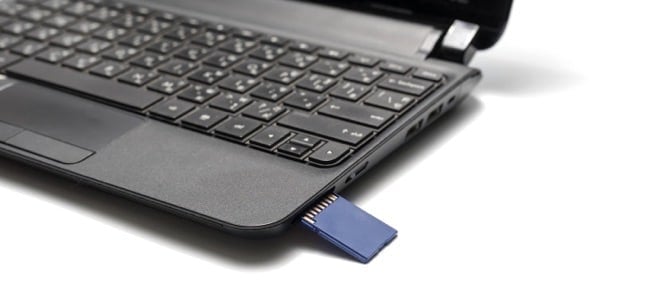If you fail to access your SD card data on your computer, it is likely that your SD card is malfunctioning. This article will look at this issue and teach you how to diagnose and fix it in 6 steps.
According to my previous post – “7 Most Common Causes of SD Card Corruption”, you can learn that SD card is vulnerable to various factors, like manufacturing defects, file system corruption, bad sectors and improper handling, etc. Therefore, if you have a SD card, you should regularly back up your SD card data, which will help a lot if your SD card fails. Similar to backing up Outlook data, if your Outlook data gets lost or corrupt, you can easily recover PST data from the backups.

However, if you don’t have any current or useful backups, you will try best to fix the SD cards. You can take the following 6 effective steps.
1. Insert Your SD Card to the other Devices
If your SD card is entirely unable to being detected out, chances that your SD card is not the actual cause. Perhaps the device which you plug in the SD card to is the culprit. In other words, the device itself can’t recognize and read a SD card. Thus, you can remove your SD card from the current device and connect it to the other devices.
2. Scan and Fix the SD Card via CHKDSK
Like checking the traditional hard drive, you can scan and try to fix your SD card by CHKDSK.
- Firstly, insert your SD card to a card reader.
- And then connect it to your computer. If your PC can detect it, move on. Or if not, directly turn to the next tip.
- Next go to your “Computer” to note the drive letter assigned to the SD card.
- Later open the “Start Menu” and search “cmd” and press “Enter”.
- In the Command Prompt window, you can type “CHKDSK drive letter:/f” and hit “Enter” key, for instance, “CHKDSK E:/f”.
3. Assign a Drive Letter to the SD Card Manually
In the above step, maybe you will find that the SD card cannot display or you will get an error message, mentioning that please insert the disk into drive. It means that your operating system is not reading the SD card. In most cases, it is because that your system hasn’t assigned a drive letter to it. Therefore, you should assign a drive letter to it manually by changing your operating system settings.
4. Re-install the Driver
Moreover, this issue can stem from your computer driver’s faults. Hence, you can reinstall your computer driver to have a try.
- First, open “Start Menu”
- Then, right click on “Computer” and select “Manage” from the context menu.
- Next click on the “Device Manager” on the left side.
- After that, in the central part, double click on “Disk drives”.
- In the following list, right click on the driver which corresponds to SD card.
- Subsequently, from the right clicking menu, select “Uninstall”.
- Now remove the SD card and restart your PC.
- Lastly, insert the card again to check if it can be detected.
5. Disable Write Protected Mode
If actually you are permitted to read your data in the SD card but you can’t save your modifications on the data, it is possible that the SD card is in write protected mode. In this case, you can simply unlock the switch or change specific settings to disable the mode.
6. Resort to Data Recovery Professionals
Last but not least, provided that all the above methods cannot make effects, your last resort is to seek assistance from professional in this industry – data recovery. Most of them must be willing to offer your some suggestions. If you afford it, you can try some specific recovery software, too. But please keep cautious since there are too much unreliable and false software in today’s market.
Author Introduction:
Shirley Zhang is a data recovery expert in DataNumen, Inc., which is the world leader in data recovery technologies, including fix SQL Server and outlook repair software products. For more information visit www.datanumen.com